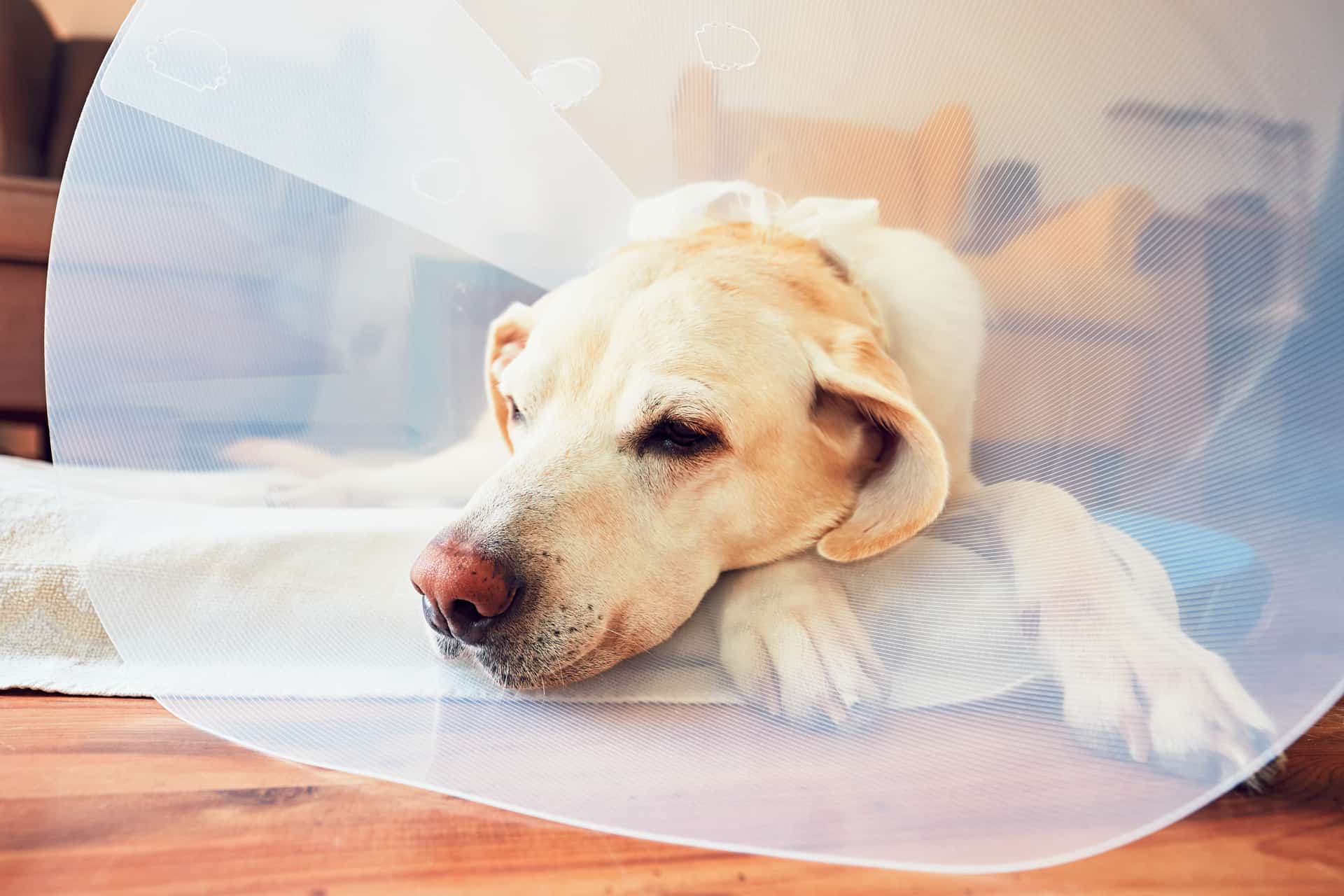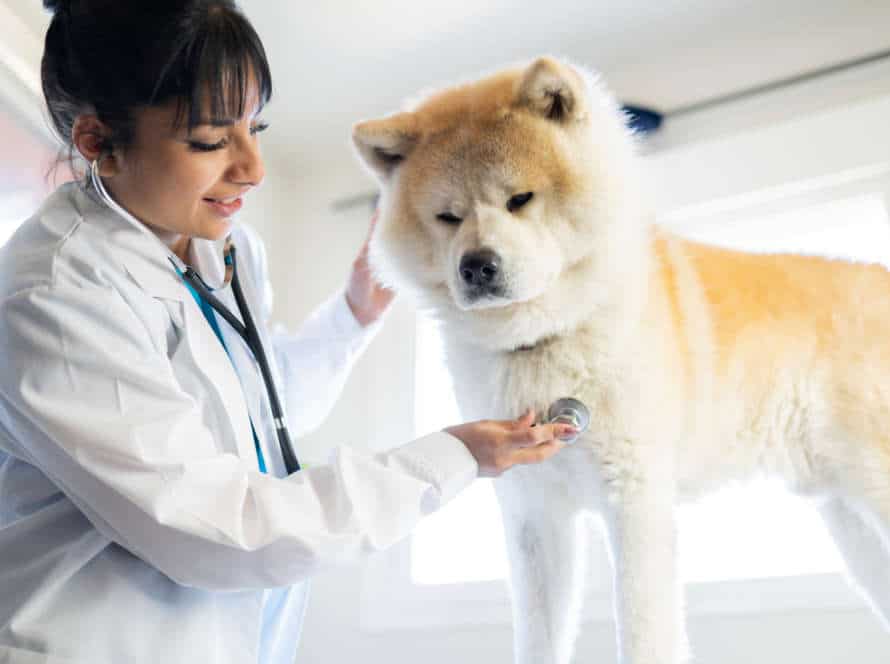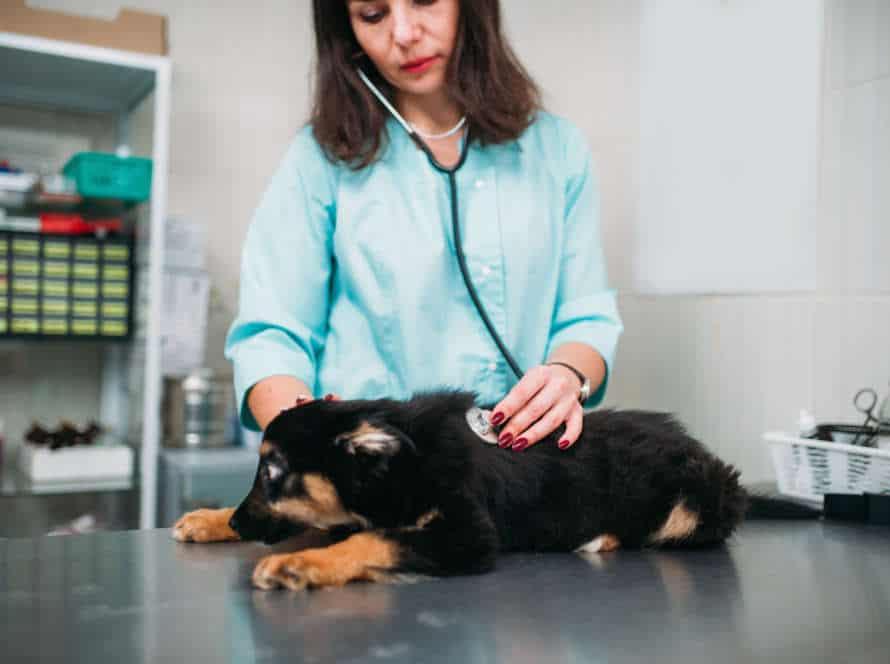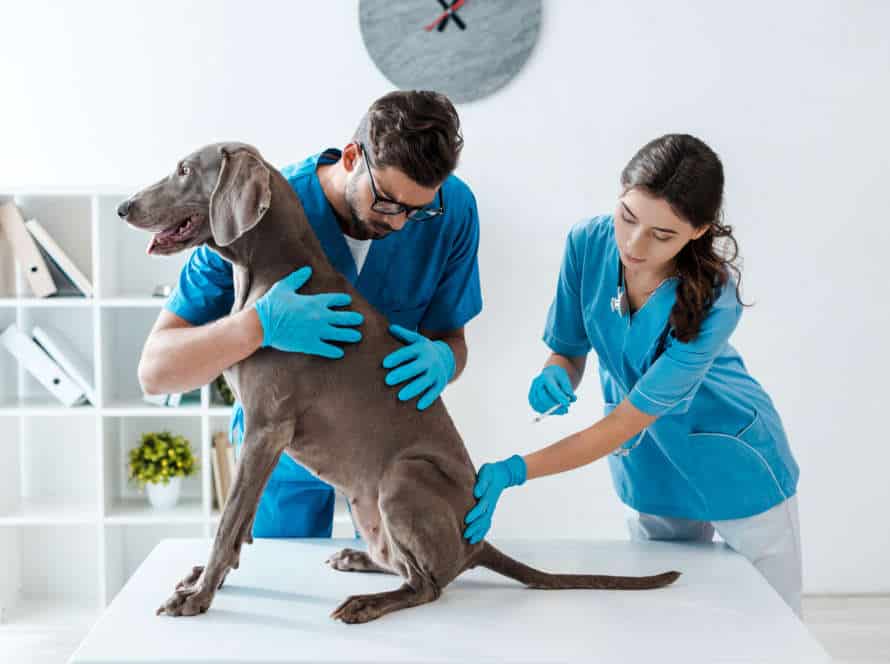When to Spay or Neuter Your Dog: Age Considerations
When to spay or neuter your pup has lasting effects on their health and conduct. Age is very important when deciding the best time for the procedure.
For female dogs, it’s suggested to wait until they are at least 6 months old before spaying. This ensures their reproductive systems have developed properly and decreases the risk of complications.
For male dogs, neutering can be done as soon as 8 weeks old, but many pet owners prefer to wait till 6 months.
It is important to talk to your vet to decide what is best for your pup’s health and special situation.
Know that spaying or neutering your pup at the right age lowers the chance of health issues, reduces bad behavior and leads to a longer, healthier life for your furry pal.
Spaying and Neutering – What is it?
Spaying and Neutering are operations to take away reproductive organs from animals like cats and dogs. These procedures are beneficial for managing pet population and for keeping pets healthy. So, when is the ideal age to spay or neuter your canine? Let’s examine this in detail.
Spaying female dogs
Spaying is a medical procedure done on female dogs. It removes their ovaries and uterus. This is to stop them getting pregnant.
Neutering is also a medical procedure. This is done on male dogs. It removes their testicles and stops them fathering puppies.
The ideal age for spaying or neutering a dog depends. This is based on breed, size and medical history. It is usually recommended to wait until the dog is at least six months old and has gone through their first heat cycle. This ensures the dog is sexually mature. It also stops any complications that could arise from early spaying. These include stunted growth and increased risk of certain diseases. Neutering can be done earlier, usually around six to eight weeks of age.
It is best to talk to your vet. They will know the best time to spay or neuter your dog. This is based on their specific needs and health history.
Neutering male dogs
Neutering is a surgery to remove male dogs’ testicles, making them sterile and unable to reproduce. Spaying is a similar process for female dogs, taking out their ovaries and uterus.
Deciding when to neuter isn’t a one-size-fits-all situation. Generally, it’s suggested to wait until your male dog is fully grown, at 6-12 months old. This guarantees the dog is physically and mentally ready for the procedure, with less chance of complications.
Neutering has multiple benefits, such as lowering the danger of certain health problems, managing aggression, and avoiding unwanted breeding.
Speak to your vet to decide the best time to neuter your pup and make sure the procedure is done correctly and safely.
Benefits of spaying and neutering
Spaying and neutering are beneficial to both dogs and their owners. Spaying is the surgical removal of a female dog’s reproductive organs. Neutering is the removal of a male dog’s testicles. Here are the advantages of spaying and neutering your pup:
- Improved behavior. Spayed/neutered dogs are often less aggressive, and less likely to roam or destroy things.
- Reduced risk of certain diseases. Spaying/neutering can lower the possibility of certain cancers and infections.
- Decreased overpopulation. It helps control the number of dogs in shelters or on the streets.
Dogs can be safely spayed/neutered as early as 8 weeks old. Check with your vet to know the best time for the procedure.
“Early” Spay or Neuter
Spaying or neutering your pup has numerous health advantages. Usually, spaying and neutering dogs is suggested after they reach 6 months old. Recently, many pet owners are opting to spay or neuter their canines as soon as 8 weeks. Let’s dive into the advantages and disadvantages of this “early” process and help you make a wise decision.
Definition of “early” spay or neuter
“Early” spay or neuter is when puppies are spayed or neutered as young as 8 weeks old.
Studies show benefits such as a smaller risk of reproductive diseases and no chance of unwanted behaviors. Plus, it also decreases the number of unwanted puppies in shelters.
However, there are some risks, such as a slight increase in orthopedic conditions and delayed growth or altered body shape.
The best time to spay or neuter should be assessed with your vet. Pro Tip: Talk to your vet to decide the best time.
Arguments for “early” spay or neuter
The argument for early spay or neuter is that it can provide many health benefits for your doggo. It can also reduce the number of unwanted pups. Here are some reasons why:
- Health Benefits: Spaying/neutering can lower the risk of mammary and testicular cancer. Also, it eliminates uterine infections and can stop behavioral problems like aggression and roaming.
- Reducing Overpopulation: Early spay/neuter can help lower the number of unwanted pups and prevent thousands of doggos from being put down in shelters.
- Timing: Many experts say spay/neuter your pup between 6-12 months old. This is before puberty which can increase the risk of health problems.
- But, talk to your vet before making any decisions. The best age to spay/neuter depends on breed, size, and health status.
Arguments against “early” spay or neuter
Spaying or neutering dogs at an early stage is a debated topic among animal experts. Here are some arguments against it:
- Risk of orthopedic disorders: Studies suggest that early neutering can lead to higher risk of orthopedic issues, like torn ligaments and hip dysplasia. This is because hormones help in bone and joint tissue growth. Removing them too soon can impact the process.
- Urinary incontinence: Spaying, before six months, can increase the risk of urinary incontinence later. This is because the removal of hormones can affect urinary system development and function.
- Behavioral problems: Spaying or neutering too early may cause behavioral issues, like aggression, fear, and anxiety.
It is best to consult with a vet to decide the ideal timing for spaying or neutering. It depends on factors like breed, size, and health condition.
Spay or Neuter by Age Group
Choosing to spay or neuter your pup is a big decision. It can help with physical and mental health. So, when is the best time to do the procedure? It depends on the age of your pup. Let’s look at when you should spay or neuter dogs by age group.
Puppies
Deciding when to spay or neuter your puppy can be tricky. Consider their age group before you make the decision.
The best age for the procedure depends on the breed, size, and health of your pup. For bigger breeds, it is recommended to wait until two years old. Smaller breeds can be spayed or neutered as early as six months.
Spaying or neutering puppies helps stop unwanted pregnancies and offers several health benefits. These include lowered risk of certain cancers, and it can help reduce behaviours like marking or fighting. Talk to your vet to figure out the best age for your pup’s spay or neuter. This will ensure their well-being and optimal health.
Juveniles
Pups can be spayed or neutered as soon as 8 weeks old. But it’s best to wait until they’re 6 months old. Talk to your vet to decide when’s best. Here are age-related pros and cons:
- 8-16 weeks:
- Pros – Quicker procedure, fast healing.
- Cons – May affect growth if done too early.
- 6-8 months:
- Pros – Mature enough; reduced health risks.
- Cons – Longer recovery time.
- Over 1 year old:
- Pros – Fully grown; may have bad behaviors already.
- Cons – Health risks; long recovery.
Adults
Spaying or neutering your dog is a decision you must make. The timing depends on your pup’s age. Here’s what you need to know:
Puppies: 6-9 months old is when they normally get the procedure. After they reach a good weight and get vaccinated, it is safe.
Adults: Can be done at any age, but it is best before they reach 1-2 years old.
Seniors: They can also have the surgery, but extra care and monitoring is needed before and after.
Talk to your vet to decide when to spay or neuter your dog based on their health.
Health and Behavioral Considerations
Spaying and neutering your pup can be advantageous for the animal’s health and conduct. It lessens the possibility of specific cancers and other illnesses. It can also aid in controlling undesired behaviors, like barking and aggressiveness. In this article, we will look at age factors when deciding when to spay or neuter your pet.
Health risks of spaying or neutering
Spaying or neutering your pup has a few perks; like lowered risk of particular cancers and undesirable behaviours. But, there are also health risks linked to these procedures. These include greater chance of obesity and joint issues, and a minorly higher danger of certain types of cancers.
Weigh the potential health risks against the benefits of spaying or neutering your dog. Discuss your options and worries with a certified vet to make an informed choice. Also, take into account the breed, size, and individual health needs of your pet when determining the best age to spay or neuter. Pro tip: Always consult your licensed veterinarian for the best decision for your pet.
Behavioral changes
Spaying and neutering your pup can bring about various behavioral shifts which may affect its overall wellbeing and lifestyle. The best timing for spaying and neutering in dogs depends on a few factors like age, breed, and physical development.
Generally, spaying or neutering your dog before it hits sexual maturity (roughly 6 to 8 months old) may stop undesirable behaviors like roaming, marking, and aggression. Yet, early spaying or neutering could be linked to certain health issues, like joint problems, obesity, and certain types of cancer.
Waiting until your dog reaches full physical and mental development (about 12 to 24 months) may help reduce some of these health hazards while still preventing unwanted behaviors.
In the end, the choice of when to spay or neuter your dog ought to be based on a watchful thought of your pup’s breed, size, and individual needs, as well as consultation with your veterinarian.
Alternatives to spaying or neutering
Spaying or neutering is a popular way to restrain pet population and stop certain health conditions. But, there are other options you can ponder based on health and behavior variables.
Here’s some alternatives to spaying or neutering your pooch:
- Vasectomy or tubal ligation: These methods block pregnancy whilst maintaining the canine’s hormone production.
- Medication: Particular meds are accessible that can obstruct unwanted mating habits in dogs.
- Behavior modification: Training and behavior adjustment approaches are useful for subduing certain unsuitable mating activities such as aggression and marking.
It’s essential to assess the pros and cons and take into account factors like breed, age, and gender when deciding whether to spay or neuter your dog or use an alternate.
Making the Decision
Deciding to spay or neuter your dog is a huge choice. It needs to be thought over carefully. Know the physical and emotional advantages and disadvantages. Age and size are two huge points to consider. Let’s dive deeper into these.
Consulting with a veterinarian
Consulting with a vet is key when figuring out the perfect age to spay or neuter your pup. Vets suggest thinking about a few factors first. Here are some age-related factors to mull over:
- Age and body weight: Small doggies grow quicker, and their growth may be blocked if they get neutered or spayed too early. Big breed pooches should wait till they’re fully grown to prevent potential joint issues.
- Behavioral Issues: Spaying or neutering your doggo can decrease or do away with certain behavior woes like aggression, marking, and wandering.
- Overall Health: If your pup has any health problems, your vet may recommend postponing the procedure.
Chat with your vet to decide the best time to spay or neuter your pup based on their individual needs and conditions.
Understanding the breed and individual dog
Choosing when to spay or neuter your pup can be tough. It’s important to know your breed and dog’s specific characteristics. For larger breeds, it’s beneficial to delay spaying/neutering. This allows for proper growth and development of their bones, joints, and organs. Smaller breeds can be spayed/neutered earlier, usually between 4-6 months of age.
Personality traits should also be taken into account. Male dogs with aggressive behavior towards other dominant males may need to be neutered earlier to avoid any potential fights.
Ultimately, the best timing for spaying/neutering depends on your pup’s unique characteristics, medical history, and breed. Consult with a vet first before making any decisions.
Pro Tip: Spaying/neutering can provide health benefits like reducing the risk of certain cancers and infections.
Personal considerations for spaying or neutering.
Spaying or neutering your pup is an important choice. Various personal elements come into account when deciding when to do the procedure. Age is a key factor as it affects your furry friend’s behavior, health, and growth. Usually, the operation is done between 6-9 months, but every pup is unique and may require different timing.
Here are some personal things to consider:
- Behavior: Hormones can influence your pup’s behavior, such as marking, aggression, or running away. Consider their attitude when deciding.
- Health: Some breeds should be spayed/neutered at an earlier age to avoid health issues, like cancer, urinary tract infections, or arthritis.
- Growth: The procedure impacts your pup’s growth. If they are a bigger breed, wait until they’re done growing before spaying/neutering them.
Always talk to your vet to decide the best timing for your pup’s needs and overall health.
Pro tip: It’s essential to consider your pup’s characteristics and consult with your vet to ensure the best outcome for your furry friend.
Frequently Asked Questions
1. At what age should I spay or neuter my dog?
The recommended age for spaying or neutering dogs depends on their breed, size, and gender. For most dogs, it’s recommended to spay or neuter them between 6 and 12 months old.
2. What are the health benefits of spaying or neutering my dog?
Spaying or neutering your dog can offer several health benefits, such as reducing the risk of certain cancers, preventing unwanted litters, and reducing behavioral issues like aggression and roaming.
3. Can I spay or neuter my dog when they’re older?
While it’s generally recommended to spay or neuter dogs between 6 and 12 months old, it’s still possible to do so when they’re older. However, older dogs may have a higher risk of complications during surgery.
4. Will spaying or neutering my dog change their behavior?
Spaying or neutering your dog can alter their behavior by reducing aggression, marking, and roaming. However, it won’t change their basic personality or temperament.
5. Can I still breed my dog if I spay or neuter them?
Spaying or neutering your dog will render them incapable of breeding. If you want to breed your dog, you should not spay or neuter them.
6. What’s the recovery period like after spaying or neutering my dog?
The recovery period after spaying or neutering your dog usually lasts 7-14 days. During this time, you should keep your dog calm and quiet, prevent them from licking their incision, and limit their physical activity.







